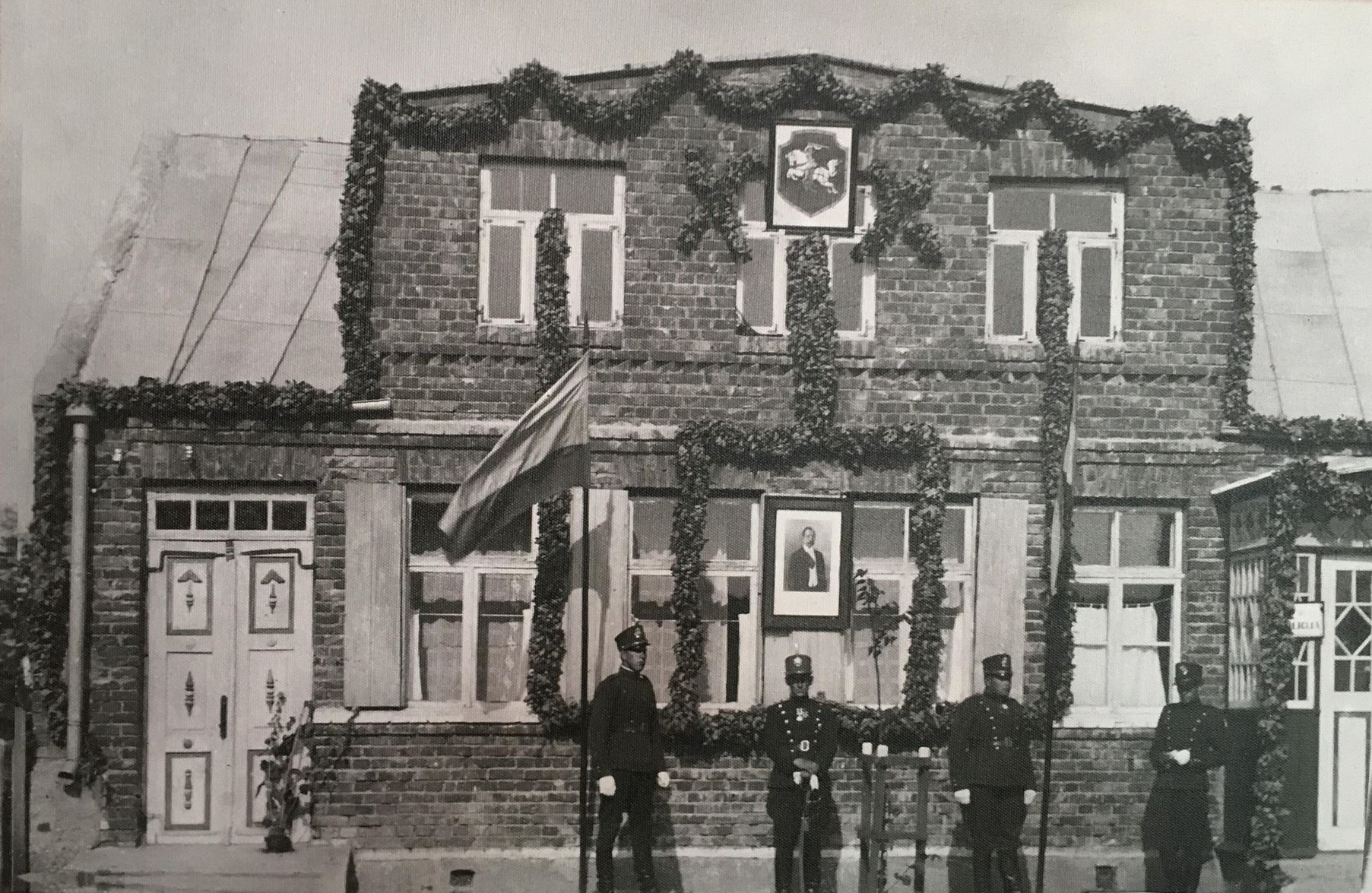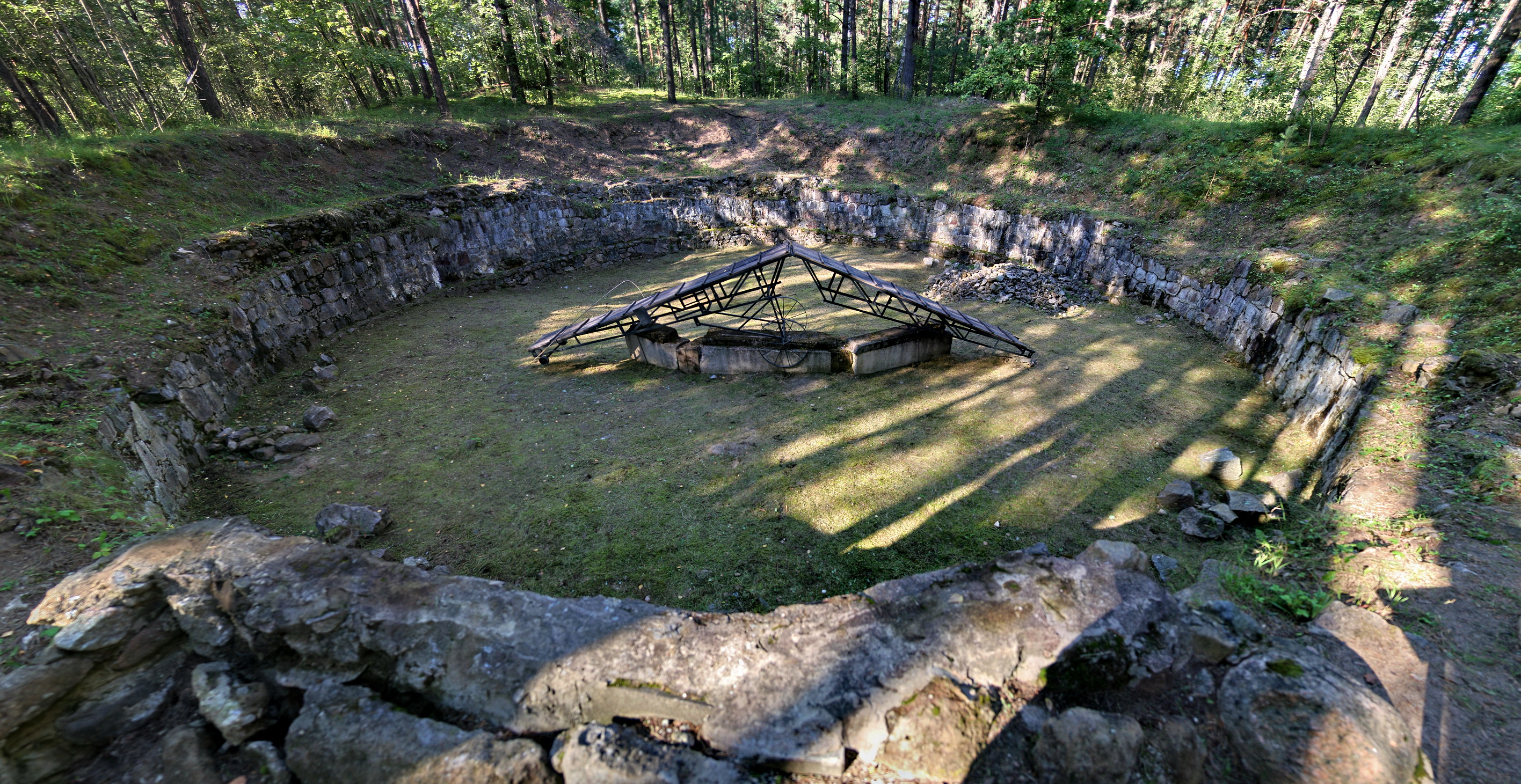|
é§idikai
é§idikai (Samogitian language, Samogitian: ''é§ádáká'') is a town in Maéƒeikiai district municipality, Lithuania. It is located 21 km west of Maéƒeikiai. é§idikai is the seat of Elderships of Lithuania, é§idikai elderate. é§idikai is known for being the home of é atrijos Ragana, Marija Peákauskaitá ã é atrijos Ragana, a famous Lithuanian writer (1877ã1930) for the last 15 years of her lifetime. Etymology Name ''é§idikai'' originates from the words ''é§ydi kaip laukas'' (''blooms like a field'' in English), or from the word ''é§idikis'' (meaning ''tough''). é§idikai was first mentioned in historic records in 1568 AD. History From 1614, é§idikai was held by the Kraéƒiai Jesuits. In 1659, during the Northern Wars, Sweden, Swedish forces burnt down é§idikai. Between 1918 and 1939, when Lithuania was established as an Act of Independence of Lithuania, independent state, é§idikai prospered. It was both the center of a Catholic parish and the center of local ... [...More Info...] [...Related Items...] OR: [Wikipedia] [Google] [Baidu] |
é atrijos Ragana
é atrijos Ragana ("Witch of é atrija") was the pen name of Marija Peákauskaitá (; March 8, 1877 ã July 24, 1930), a Lithuanian humanist and romantic writer and educator. Her most successful works are (''In the Old Estate'', 1922) and ''Irkos tragedija'' (''Tragedy of Irka''). Biography Born in Rietavas Municipality, Medingánai, Kovno Governorate to a family of petty Lithuanian nobility, Lithuanian nobles, Peákauskaitá was raised in Polish culture. However, she made friends with local Lithuanian peasants and, influenced by her tutor Povilas ViéÀinskis, joined the Lithuanian National Revival. Because of poor health and expensive tuition, Peákauskaitá did not graduate from a gymnasium in Saint Petersburg and had to complete her education privately in the Labé¨nava estate near Uéƒventis. ViéÀinskis translated her first works, written in Polish, into Lithuanian and published in liberal Lithuanian periodicals, such as ''Varpas'' and ''éˆkininkas''. However, Peákauskaitá dis ... [...More Info...] [...Related Items...] OR: [Wikipedia] [Google] [Baidu] |
Elderships Of Lithuania
A ''senié¨nija'' (in English: eldership, elderate, ward, parish, or subdistrict) is the smallest Subdivisions of Lithuania, administrative division of Lithuania. An eldership may comprise a very small region consisting of few villages, one single town, or a part of a big city. Elderships vary in size and population depending on their location and nature. A few elderships make up a municipality. é ilainiai, Dainava (Kaunas), Dainava, Verkiai, é§irmé¨nai and PaéÀilaiáiai are the most populous elderates, with population counts over , around twice the population of some entire municipalities. Elderships manage small-scale local matters, such as repairing pavements and dirt roads, and keep records on all families living in the eldership. The premise of the concept is that — unlike in higher administrative divisions — an Elder (administrative title), elder (the leader of the eldership) could have time to talk to every person in the eldership who wants to. Modern Lit ... [...More Info...] [...Related Items...] OR: [Wikipedia] [Google] [Baidu] |
Elderate
A ''senié¨nija'' (in English: eldership, elderate, ward, parish, or subdistrict) is the smallest administrative division of Lithuania. An eldership may comprise a very small region consisting of few villages, one single town, or a part of a big city. Elderships vary in size and population depending on their location and nature. A few elderships make up a municipality. é ilainiai, Dainava, Verkiai, é§irmé¨nai and PaéÀilaiáiai are the most populous elderates, with population counts over , around twice the population of some entire municipalities. Elderships manage small-scale local matters, such as repairing pavements and dirt roads, and keep records on all families living in the eldership. The premise of the concept is that — unlike in higher administrative divisions — an elder (the leader of the eldership) could have time to talk to every person in the eldership who wants to. Modern Lithuania is divided into 10 counties, 60 municipalities, and 546 elder ... [...More Info...] [...Related Items...] OR: [Wikipedia] [Google] [Baidu] |
1941
The Correlates of War project estimates this to be the deadliest year in human history in terms of conflict deaths, placing the death toll at 3.49 million. However, the Uppsala Conflict Data Program estimates that the subsequent year, 1942, was the deadliest such year. Death toll estimates for both 1941 and 1942 range from 2.28 to 7.71 million each. Events Below, the events of World War II have the "WWII" prefix. January * JanuaryãAugust – 10,072 men, women and children with mental and physical disabilities are asphyxiated with carbon monoxide in a gas chamber, at Hadamar Euthanasia Centre in Germany, in the first phase of mass killings under the Aktion T4 program here. * January 1 – Thailand's Prime Minister Plaek Phibunsongkhram decrees January 1 as the official start of the Thai solar calendar new year (thus the previous year that began April 1 had only 9 months). * January 3 – A decree (''Normalschrifterlass'') promulgated in Germany by Martin Bormann ... [...More Info...] [...Related Items...] OR: [Wikipedia] [Google] [Baidu] |
Northern Wars
"Northern Wars" is a term used for a series of wars fought in northern Europe, northern and northeastern Europe from the 16th to the 18th century, primarily between the territorial rivals of the Swedish Empire, Tsardom of Russia, PolandãLithuania, and DenmarkãNorway. The Great Northern War is generally considered to have concluded the Northern Wars with the decline of Sweden and establishment of the Russian Empire as the principal power of the region, however there are different scholarly opinions on which war constitutes the First Northern War and an internationally agreed-on nomenclature for these wars has not yet been devised.Frost (2000), p. 13 Conflicts of the Northern Wars Depending upon what date is chosen for the starting point, the Northern Wars comprise: *The Russo-Swedish War (1554ã1557), "First Northern War" according to Arvo Viljanti *The Livonian War (1558ã1583), "First Northern War" according to Klaus Zernack **The Northern Seven Years' War (1563ã1570), "F ... [...More Info...] [...Related Items...] OR: [Wikipedia] [Google] [Baidu] |
Sweden
Sweden, formally the Kingdom of Sweden, is a Nordic countries, Nordic country located on the Scandinavian Peninsula in Northern Europe. It borders Norway to the west and north, and Finland to the east. At , Sweden is the largest Nordic country by both area and population, and is the List of European countries by area, fifth-largest country in Europe. Its capital and largest city is Stockholm. Sweden has a population of 10.6 million, and a low population density of ; 88% of Swedes reside in urban areas. They are mostly in the central and southern half of the country. Sweden's urban areas together cover 1.5% of its land area. Sweden has a diverse Climate of Sweden, climate owing to the length of the country, which ranges from 55th parallel north, 55ô¯N to 69th parallel north, 69ô¯N. Sweden has been inhabited since Prehistoric Sweden, prehistoric times around 12,000 BC. The inhabitants emerged as the Geats () and Swedes (tribe), Swedes (), who formed part of the sea-faring peopl ... [...More Info...] [...Related Items...] OR: [Wikipedia] [Google] [Baidu] |
Act Of Independence Of Lithuania
The Act of Independence of Lithuania () or the Act of February 16th, also the Lithuanian Resolution on Independence (),The signed document is actually titled simply , meaning 'decision' or 'resolution', and it "proclaims the restoration of the independent state of Lithuania". was signed by the Council of Lithuania on February 16, 1918, proclaiming independence from Russia and the restoration of an independent State of Lithuania, governed by democratic principles, with Vilnius as its capital. The Act was signed by all twenty representatives of the Council, which was chaired by Jonas Basanaviáius. The Act of February 16 was the result of a series of resolutions on the issue, including one issued by the Vilnius Conference and the Act of January 8. The path to the Act was long and complex because the German Empire exerted pressure on the Council to form an alliance. The Council had to carefully maneuver between the Germans, whose troops were present in Lithuania, and the demands ... [...More Info...] [...Related Items...] OR: [Wikipedia] [Google] [Baidu] |
Shtetl
or ( ; , ; Grammatical number#Overview, pl. ''shtetelekh'') is a Yiddish term for small towns with predominantly Ashkenazi Jews, Ashkenazi Jewish populations which Eastern European Jewry, existed in Eastern Europe before the Holocaust. The term is used in the context of former Eastern European Jewish societies as mandated islands within the surrounding non-Jewish populace, and thus bears certain connotations of discrimination.Marie Schumacher-Brunhes"Shtetl" ''European History Online'', published July 3, 2015 (or , , or ) were mainly found in the areas that constituted the 19th-century Pale of Settlement in the Russian Empire (constituting modern-day Belarus, Lithuania, Moldova, Ukraine, Poland, Latvia and Russia), as well as in Congress Poland, Kingdom of Galicia and Lodomeria, Austrian Galicia and Duchy of Bukovina, Bukovina, the Kingdom of Romania and the Kingdom of Hungary. In Yiddish, a larger city, like Lviv or Chernivtsi, is called a (), and a village is called a ( ... [...More Info...] [...Related Items...] OR: [Wikipedia] [Google] [Baidu] |
Soviet
The Union of Soviet Socialist Republics. (USSR), commonly known as the Soviet Union, was a List of former transcontinental countries#Since 1700, transcontinental country that spanned much of Eurasia from 1922 until Dissolution of the Soviet Union, it dissolved in 1991. During its existence, it was the list of countries and dependencies by area, largest country by area, extending across Time in Russia, eleven time zones and sharing Geography of the Soviet Union#Borders and neighbors, borders with twelve countries, and the List of countries and dependencies by population, third-most populous country. An overall successor to the Russian Empire, it was nominally organized as a federal union of Republics of the Soviet Union, national republics, the largest and most populous of which was the Russian SFSR. In practice, Government of the Soviet Union, its government and Economy of the Soviet Union, economy were Soviet-type economic planning, highly centralized. As a one-party state go ... [...More Info...] [...Related Items...] OR: [Wikipedia] [Google] [Baidu] |
Einsatzgruppen
(, ; also 'task forces') were (SS) paramilitary death squads of Nazi Germany that were responsible for mass murder, primarily by shooting, during World War II (1939ã1945) in German-occupied Europe. The had an integral role in the implementation of the so-called " Final Solution to the Jewish question" () in territories conquered by Nazi Germany, and were involved in the murder of much of the intelligentsia and cultural elite of Poland, including members of the Catholic priesthood. Almost all of the people they murdered were civilians, beginning with the intelligentsia and swiftly progressing to Soviet political commissars, Jews, and Romani people, as well as actual or alleged partisans throughout Eastern Europe. Under the direction of Heinrich Himmler and the supervision of SS- Reinhard Heydrich, the operated in territories occupied by the ''Wehrmacht'' (German armed forces) following the invasion of Poland in September 1939 and the invasion of the Soviet Un ... [...More Info...] [...Related Items...] OR: [Wikipedia] [Google] [Baidu] |
Kraéƒiai
Kraéƒiai (; ; ) is a historic town (Lithuania), town in Lithuania, located in the Kelmá district municipality, between Varniai (32 km) and Raseiniai (44 km), on the River. The old town of Kraéƒiai is an archeological and urban monument. History The population in 1959 was 998; ca. 2,000 in 1939; 1,761 in 1897. The town has a secondary school and is a rural community centre. Under the prewar Republic of Lithuania, Kraéƒiai was the township seat of the county of Raseiniai. After World War II it was assigned to the Soviet administrative district of Kelmá. Kraéƒiai is one of the older settlements in Samogitia. Many barrow graves and fortress hills are located in its vicinity. The name of the locality is first mentioned (as ''Crase'') in a 1257 document of King Mindaugas, by which a part of Samogitia was assigned to the Teutonic Order. Vytautas the Great during his first years of rule ceded Samogitia to the Order; the regent he appointed lived in Kraéƒiai. After the Battl ... [...More Info...] [...Related Items...] OR: [Wikipedia] [Google] [Baidu] |




